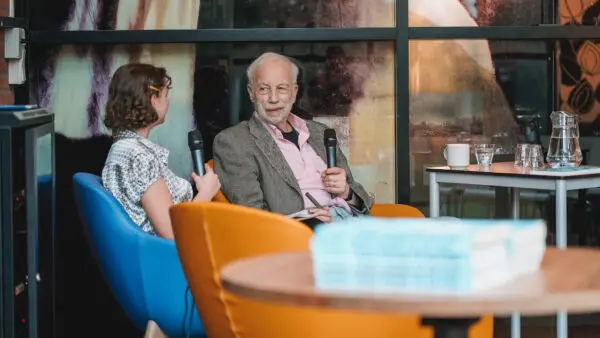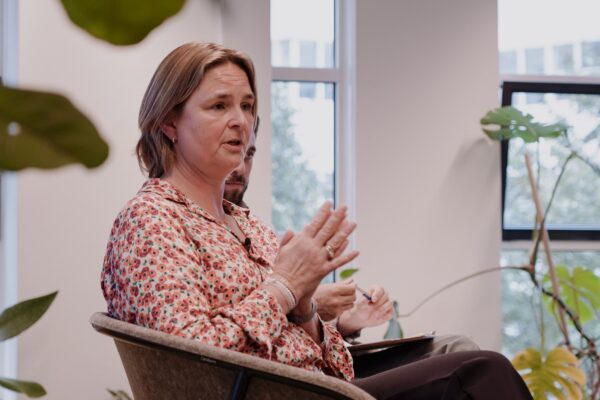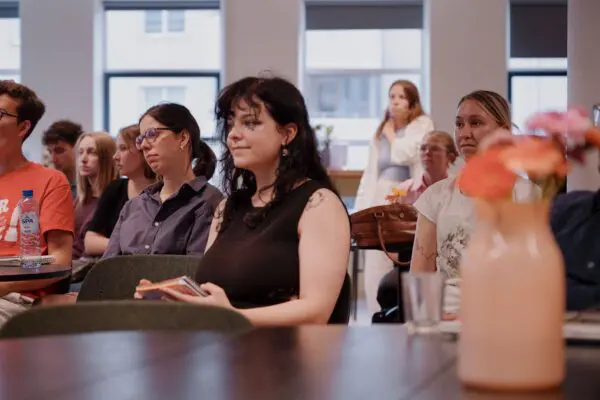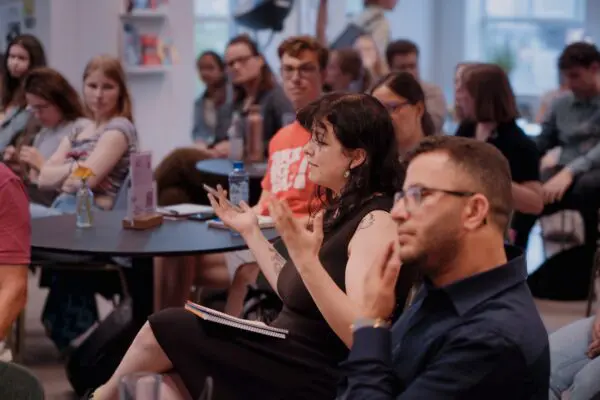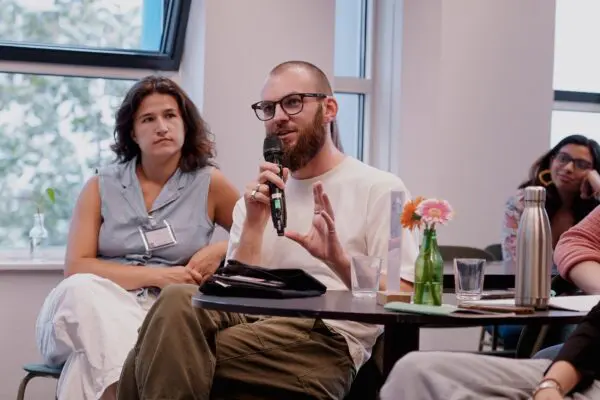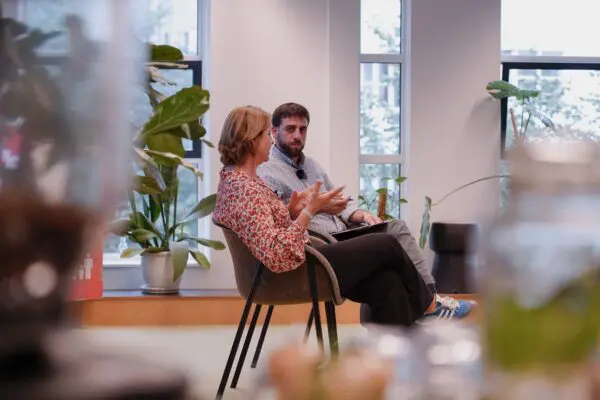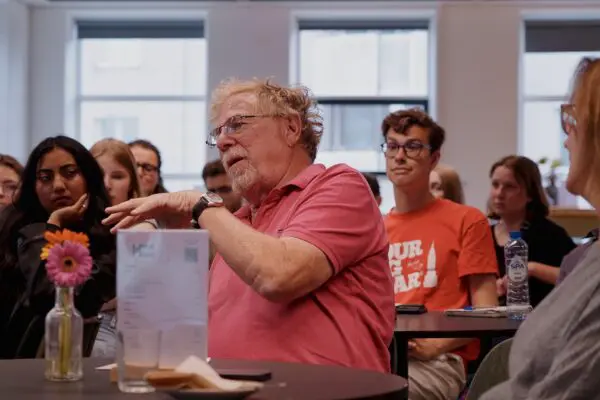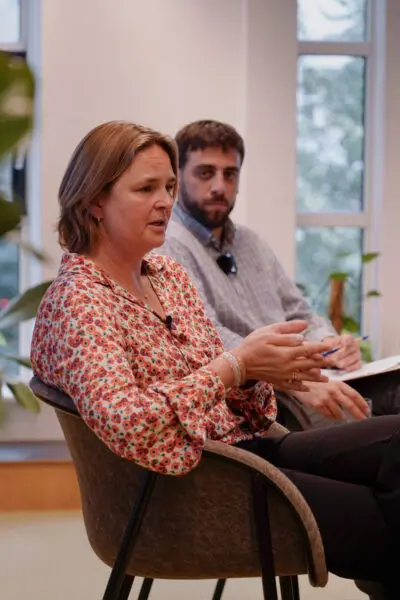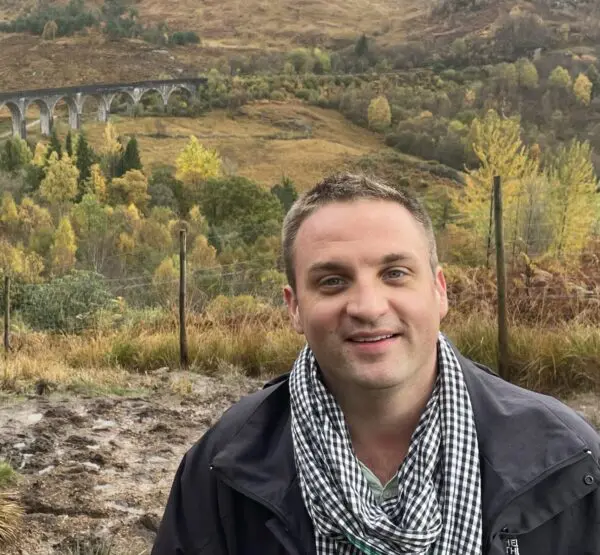On July 15, 2025, The Hague Humanity Hub hosted a special edition of The Handshake: our ongoing series that invites experienced professionals to share their journeys with the next generation of peacebuilders. The event, organised in partnership with Move 4 Human Rights, welcomed a mix of students, young professionals, and aspiring changemakers to engage in an open conversation with former Dutch ambassador and leadership coach Mette Gonggrijp. With over two decades in diplomacy and senior roles at the Ministry of Foreign Affairs, Mette’s career has spanned continents, crises, and communities. Since leaving the Ministry in 2022, she has turned her focus to mental health, trauma-informed leadership, and coaching through her social enterprise IMind2Lead.
One of the most revealing moments came from an open-ended question that Mette directed at the audience:
“What is it that you miss from your current leaders, especially when it comes to mental health, vitality, and walking the talk?”
The responses pointed to something shared but rarely voiced: a gap between what leaders say and what they show. Participants spoke of managers who encouraged boundaries but worked through exhaustion themselves. They expressed appreciation for supportive words, but also a longing for role models who demonstrated those values in practice.
As one person put it, “If you admire your manager, you want to become them, right? And sometimes… that’s not possible”
Another participant added that “words are important. But unless I can see myself, or my own struggles, in someone else, it’s not a real connection”
These reflections weren’t criticisms but observations from people trying to build sustainable careers in a sector that often rewards self-sacrifice.
What they were asking for was simple: leadership that leads by example; honestly, visibly, and humanly.
A different kind of leadership
Mette spoke candidly about the moment her pace became unsustainable: “I woke up and couldn’t get out of bed. I had ignored every signal to slow down.”
That turning point led her to redefine leadership. Not as performance, but as alignment, care, and vulnerability.
“Safe spaces. That’s what we need. And it starts with leaders showing vulnerability without consequences.”
Key takeaways
Leaders set the tone through what they do, not just what they say
If you talk about balance but never model it, people notice. Leadership by example matters.
Psychological safety is essential for honest conversations
People won’t speak up about struggles if they don’t feel secure. Hierarchies, rotation systems, and unclear power dynamics make it harder.
“I’d be more open with my manager if I felt secure.”
Mental health at work is not a personal problem but it’s a structural one
Burnout usually stems from culture, not character. Fixing it means shifting how organisations are run.
“Vitality and mental wellbeing are still treated like a checkbox”
Leaders who ignore their own limits send the wrong message
A manager who never rests, never slows down, and never sets boundaries ends up normalising that pace for everyone.
“She’s encouraging about mental health… but she’s completely overwhelmed.”
Sustainable leadership starts with staying aligned to your values
You don’t have to meet everyone’s expectations. What matters is not losing sight of your own.

The conversation with Mette Gonggrijp wasn’t just about career tips or how-to’s, but about the less visible parts of leadership: the pressures, the expectations, and the cost of never switching off. It reminded us that the way we work and lead matters just as much as what we work on.
